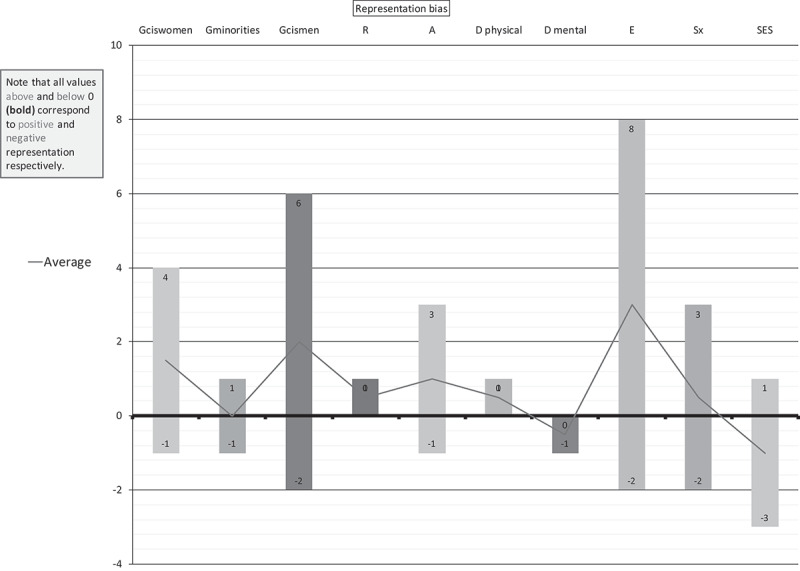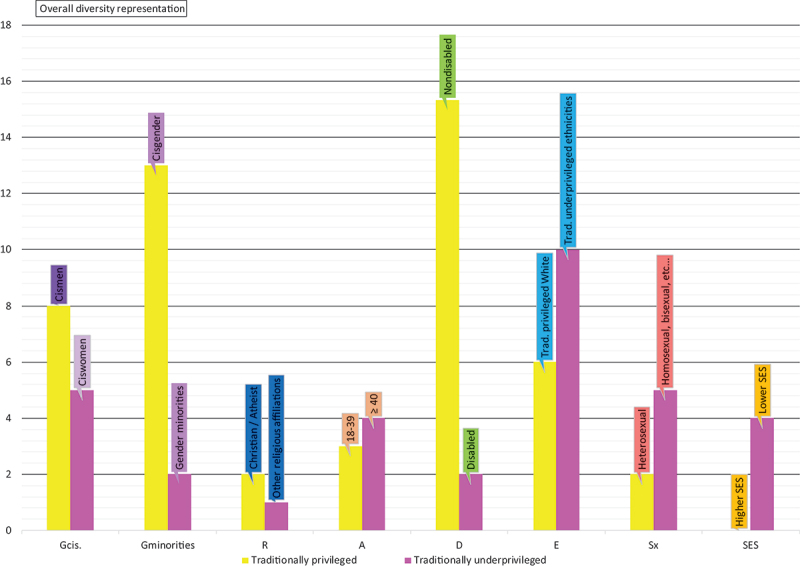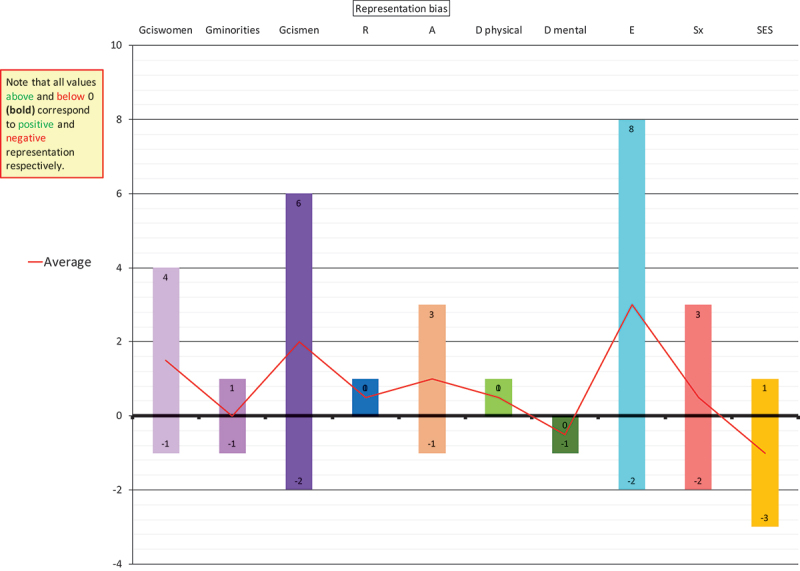下载PDF
{"title":"Development and Validation of an Instrument for Measuring Equality, Diversity and Inclusivity (EDI) in Medical Education Teaching Resources: The GRADES10.","authors":"Zachary Hollenberg, Claire Parkin","doi":"10.1080/28338073.2025.2525692","DOIUrl":null,"url":null,"abstract":"<p><p>Higher education institutions around the world have a responsibility to diversify their course content. This is an important consideration to ensure that students are prepared to serve a diverse population once they graduate, however, a lack of diversity representation in medical school curricula in particular, is reported in the literature. A paucity of reliable resources to support creating more inclusive content is also reported. This study developed and validated a diversity measurement instrument, designed to look at representation in the areas of gender, religion, age, disability, ethnicity/race, sexuality, and socio-economic status. Early prototypes were sent to experts for validity testing and using their feedback, improvements and iterations were made to the instrument until the final instrument was agreed: the GRADES10©. The instrument was then applied to a variety of medical education resources to test for rater-reliability. An accompanying user guide was developed to support users with the application of the GRADES10© in practice. Face validity was conducted by 10 experts on several iterations of the instrument from the early prototype (GRADESs7), until the final agreed GRADES10©. Rater-reliability was calculated by intraclass correlation coefficient (ICC) and Cronbach's Alpha measure of internal consistency. The GRADES10© instrument was shown to have an ICC of 0.83% (SD 0.725-0.907) <i>p</i>= < .0001, and Cronbach's Alpha of 0.97. Overall, this study has shown that the validated GRADES10© instrument is able to measure diversity in medical teaching resources reliably. The GRADES10© has the potential to contribute to creating a more inclusive learning environment by allowing its users to apply a diversity metric to their educational materials, to identify gaps and areas for improvement. If applied by medical schools and organisations offering continuing medical education courses in future, the GRADES10© may impact the grassroots of medical education diversification, which may have a beneficial effect on medical student and doctors' attitudes, experiences and ultimately on patient care.</p>","PeriodicalId":73675,"journal":{"name":"Journal of CME","volume":"14 1","pages":"2525692"},"PeriodicalIF":0.0000,"publicationDate":"2025-07-10","publicationTypes":"Journal Article","fieldsOfStudy":null,"isOpenAccess":false,"openAccessPdf":"https://www.ncbi.nlm.nih.gov/pmc/articles/PMC12247083/pdf/","citationCount":"0","resultStr":null,"platform":"Semanticscholar","paperid":null,"PeriodicalName":"Journal of CME","FirstCategoryId":"1085","ListUrlMain":"https://doi.org/10.1080/28338073.2025.2525692","RegionNum":0,"RegionCategory":null,"ArticlePicture":[],"TitleCN":null,"AbstractTextCN":null,"PMCID":null,"EPubDate":"2025/1/1 0:00:00","PubModel":"eCollection","JCR":"","JCRName":"","Score":null,"Total":0}
引用次数: 0
引用
批量引用
Abstract
Higher education institutions around the world have a responsibility to diversify their course content. This is an important consideration to ensure that students are prepared to serve a diverse population once they graduate, however, a lack of diversity representation in medical school curricula in particular, is reported in the literature. A paucity of reliable resources to support creating more inclusive content is also reported. This study developed and validated a diversity measurement instrument, designed to look at representation in the areas of gender, religion, age, disability, ethnicity/race, sexuality, and socio-economic status. Early prototypes were sent to experts for validity testing and using their feedback, improvements and iterations were made to the instrument until the final instrument was agreed: the GRADES10©. The instrument was then applied to a variety of medical education resources to test for rater-reliability. An accompanying user guide was developed to support users with the application of the GRADES10© in practice. Face validity was conducted by 10 experts on several iterations of the instrument from the early prototype (GRADESs7), until the final agreed GRADES10©. Rater-reliability was calculated by intraclass correlation coefficient (ICC) and Cronbach's Alpha measure of internal consistency. The GRADES10© instrument was shown to have an ICC of 0.83% (SD 0.725-0.907) p = < .0001, and Cronbach's Alpha of 0.97. Overall, this study has shown that the validated GRADES10© instrument is able to measure diversity in medical teaching resources reliably. The GRADES10© has the potential to contribute to creating a more inclusive learning environment by allowing its users to apply a diversity metric to their educational materials, to identify gaps and areas for improvement. If applied by medical schools and organisations offering continuing medical education courses in future, the GRADES10© may impact the grassroots of medical education diversification, which may have a beneficial effect on medical student and doctors' attitudes, experiences and ultimately on patient care.
医学教育教学资源中平等、多样性和包容性(EDI)测量工具的开发与验证:GRADES10。
世界各地的高等教育机构都有责任使其课程内容多样化。这是一个重要的考虑因素,以确保学生毕业后为不同的人群服务,然而,文献报道,特别是在医学院的课程中缺乏多样性的代表性。报告还指出,缺乏可靠的资源来支持创建更具包容性的内容。这项研究开发并验证了一种多样性测量工具,旨在研究性别、宗教、年龄、残疾、种族/种族、性取向和社会经济地位等领域的代表性。早期的原型被送到专家那里进行有效性测试,并利用他们的反馈,对仪器进行改进和迭代,直到最终仪器得到认可:GRADES10©。然后将该工具应用于各种医学教育资源,以测试其相对信度。为协助用户在实践中应用GRADES10©,我们编制了一份附带的用户指南。从早期原型(GRADESs7)到最终同意的GRADES10©,人脸有效性由10位专家对仪器进行了多次迭代。等级信度采用类内相关系数(ICC)和内部一致性的Cronbach’s Alpha测度计算。GRADES10©仪器显示ICC为0.83% (SD 0.725-0.907) p=
本文章由计算机程序翻译,如有差异,请以英文原文为准。




 求助内容:
求助内容: 应助结果提醒方式:
应助结果提醒方式:


